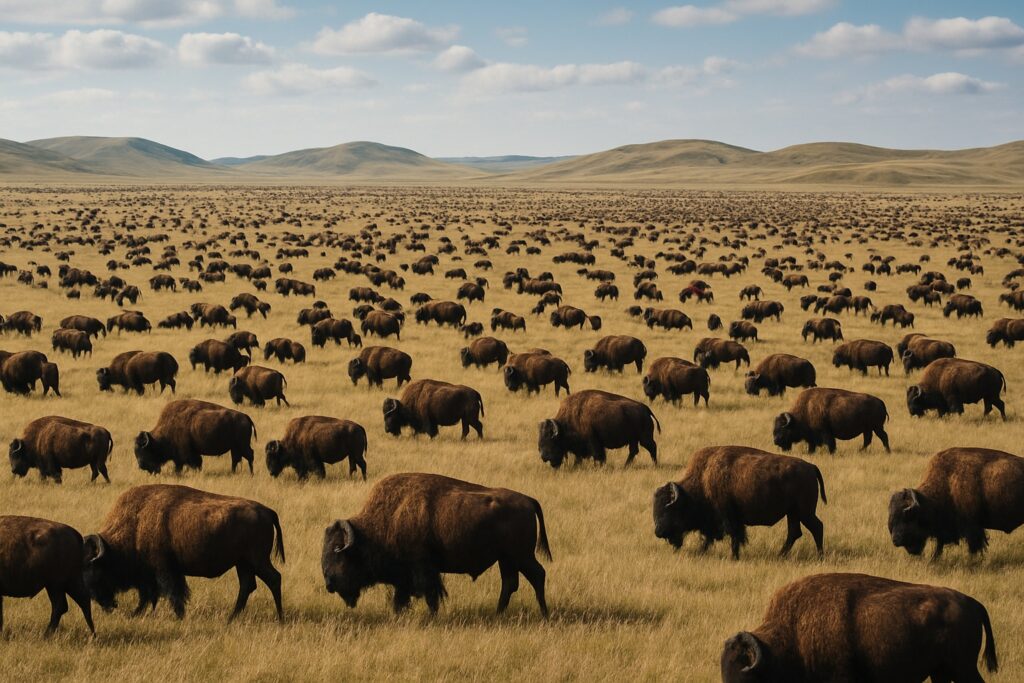As Far as The Eye
 At one time, millions of bison roamed North America, central to the culture and survival of many Indigenous nations. US government policy in the mid-19th century in the killing of these massive herds had devastating effects to Indigenous nations in the United States and Canada. In less than two decades, the great herds were virtually wiped out. By the mid-1880s, less than a thousand wild bison remained, compared to tens of millions just a few generations earlier.
At one time, millions of bison roamed North America, central to the culture and survival of many Indigenous nations. US government policy in the mid-19th century in the killing of these massive herds had devastating effects to Indigenous nations in the United States and Canada. In less than two decades, the great herds were virtually wiped out. By the mid-1880s, less than a thousand wild bison remained, compared to tens of millions just a few generations earlier.
We will never see herds like that in our lifetime however the words of many who witnessed these magnificent animals in great numbers still exist. Alexander Henry is travelling with a canoe brigade on the North Saskatchewan River to Fort Vermilion when he stops to hunt Buffalo. The Red Berry Hills he speaks of are the unnamed hills around the west shore of present day Redberry Lake about 72 km NNW of Langham, Saskatchewan.
” …I proceeded on by land on horse back accompanied by my [indigenous] hunter the Guide and one of my own people who came from above. We had not gone far before we perceived a few Bulls, and soon after observed the plains covered with numerous herds of Buffalo as far as the eye could reach on both sides of [the North Saskatchewan] River. The plains here are elevated, but level between the River and Red Berry Hills which lays about three leagues to the north of us.
…We in a short time killed, each of us a good fat Cow, which being as much as we could take upon our horses. We left off the chase, and sent one of our party down to the River to stop the Canoes, while we dressed the meat, and loaded our horses. From this spot we could see great herds in every direction. The Red Berry Hills appear entirely covered with Buffalo feeding. “
Alexander Henry ‘the Younger’
September 6, 1808
